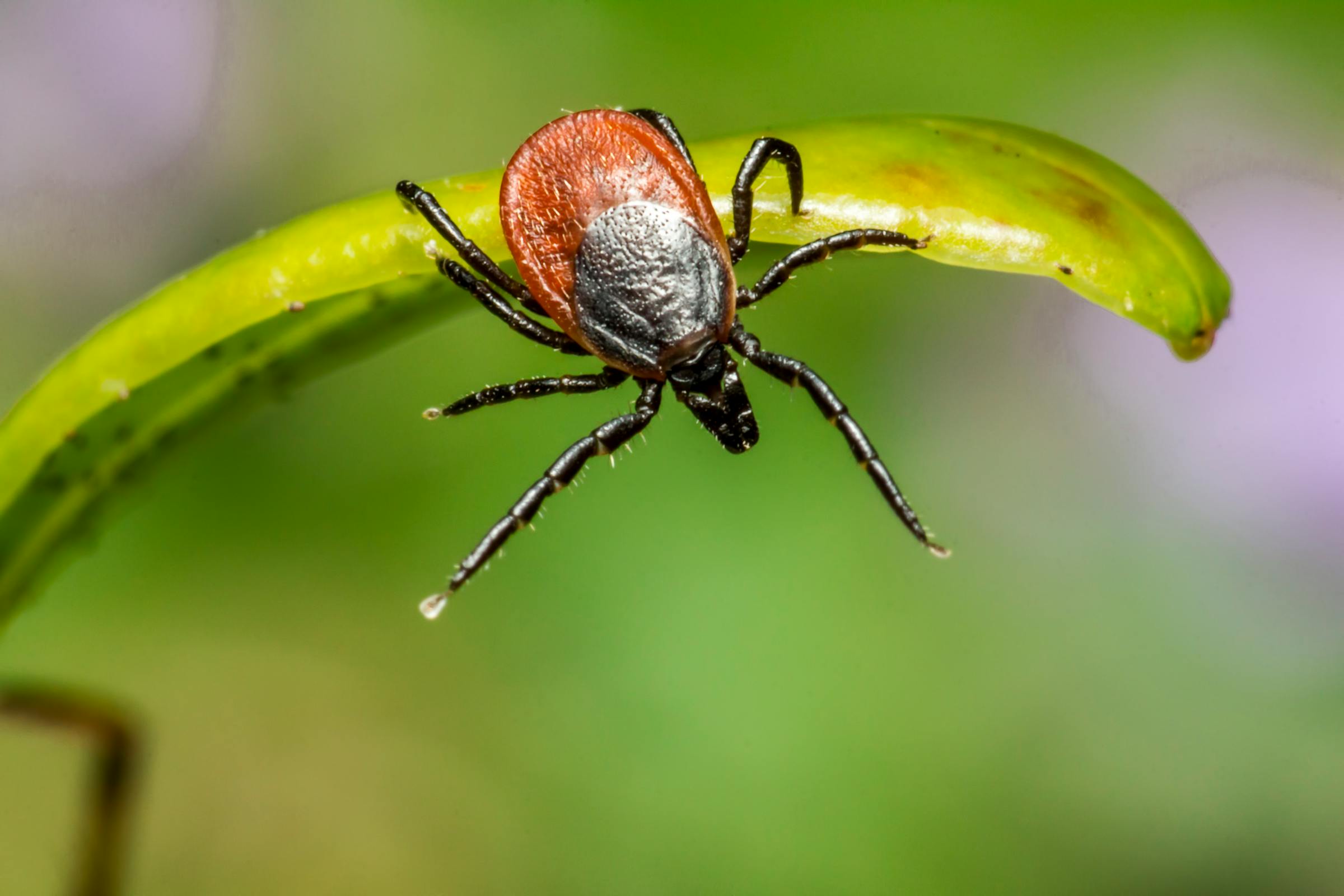May is Lyme Disease Awareness Month. Florida is humid and the perfect environment for ticks, so it is time to tune up your tick knowledge. The Centers for Disease Control reports that approximately 300,000 cases of Lyme disease are diagnosed each year, with 96% originating from only 14 states in the Northeast and Midwest. But that doesn’t mean that we are out of the woods here in Florida.
Where do ticks live?
Ticks live in wooded, grassy and brushy areas. One bite from an infected tick can transmit Lyme disease to you or your furry friend. The CDC reports that diagnoses have more than doubled in Florida over the past five years, with over 150 cases reported most recently. Increased awareness of the disease and its symptoms, combined with the CDC’s addition of more strains to the list of “confirmed” cases attribute to this increase. Infected ticks are right here in our backyard, so your best prevention is protection.
There are hundreds of tick species, but not every tick is infectious. Lyme disease comes from the bite of an infected blacklegged tick (commonly known as a deer tick). Deer ticks are not common in Florida, which led to the misconception that Lyme disease does not exist here. Another species, the lone star tick, is suspected of causing a “Lyme-like” infection in the South that is even more prevalent than its Lyme counterpart. Ticks can be tiny and are stealthy little buggers. When headed out to a tick-prone area, wear light colored, long clothing so ticks are easier to spot and have restricted access to your skin. Spray yourself, your clothes and any gear with tick repellant that contains picaridin or DEET. Consider lemon eucalyptus oil and cedar oil for a more natural solution.
Worried you picked up a tick?
Once inside, store clothes in a re-sealable bag until you can get them in the dryer for 30 minutes to kill any hitchhikers. Make sure to shower and inspect yourself! Pay attention to inconspicuous areas like in between toes, behind the knees and even your navel. If you find one, use tweezers to grab it close to the skin and pull it straight out. Do not twist it, grab it by its body, or use heat or topical agents to remove it. While the Florida Lyme Disease Association reports that there is no minimum attachment time for infection to transmit through the bite, the sooner you properly remove a tick, the better. It is always best to see a doctor, as symptoms of Lyme disease can vary and early detection with prompt treatment has a higher success of complete recovery.
Lyme disease symptoms
Symptoms of Lyme disease range widely from cold/flu-like symptoms to neurological issues and psychological changes. The condition is easily overlooked or misdiagnosed. Gainesville resident, Debbie Sorgi had aches, pains and swollen eyes for about five days when she saw a doctor and was diagnosed with the flu. Shortly after, she developed a rash that seemed more like an allergic reaction than the typical “bullseye” rash that indicates Lyme disease.
She advised the doctor that she had been bitten a few times by ticks, and was finally tested for Lyme disease. “I went from being very active to someone who had trouble getting out of bed,” said Sorgi. “I forgot how to spell certain words and couldn’t remember the names of certain things. It was symptoms that I would have never associated with Lyme.” After two years of oral medications and six weeks stints of daily infusions requiring a home health care nurse, she was still not recovering and even experienced complications resulting in gall bladder removal.
Tick treatment
After expensive tests, medications and surgery, she sought a new treatment plan from a hospital in Boston. The hospital determined that Sorgi was getting sicker from the medications than the Lyme, so they took her off everything. It took six months to get all the medications out of her system, allowing her to finally recover without any lasting damage except for a beef allergy.
“The testing for Lyme disease is for one strain from the Northeast,” Melissa Y. Bell, president of the Florida Lyme Disease Association, said. “We have divergent strains down here, and sometimes you don’t test positive. Delays in diagnosis make it harder to treat.” Bell explained that testing has not been improved in years, even though more species of tick are spreading Lyme-like diseases. Because other strains of Lyme are not reported as Lyme disease by authorities, more accurate testing is not being funded, and people are going undiagnosed. The misconception that infected ticks are not found here attributes to the perception that the disease is rare in this region of the country. Additionally, less than half of people even remember a bite or rash, keeping the condition off of their doctor’s diagnostic radar. Awareness, prevention and self-inspection are imperative.
Canine Lyme Disease
Regarding our furry friends, the Companion Animal Parasite Council lists Florida, more specifically Alachua County, as a moderate risk for canine Lyme disease. Lyme disease presents differently in animals than it does in humans. Most infected dogs do not display severe or obvious symptoms. It is important to regularly check your pet and immediately seek medical treatment and testing if it is bit by a tick and shows any of the following symptoms:
- Fever
- Arthritis in multiple joints
- Swollen lymph nodes
- Anorexia, causing fatigue
- Limping or inability to use one or more limbs
- Swelling
- Weight loss
- Vomiting/Diarrhea
Related Articles
Keep your pets healthy and protect against heart worms
Protect yourself against common gym germs

